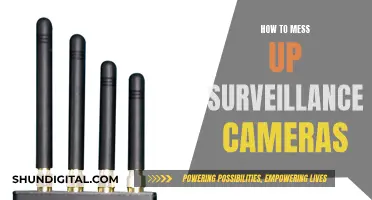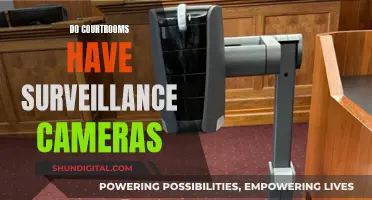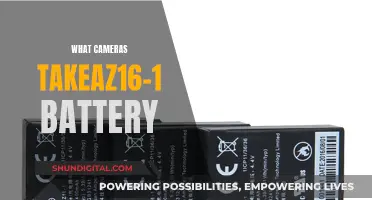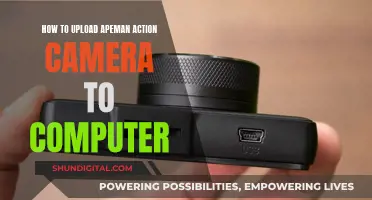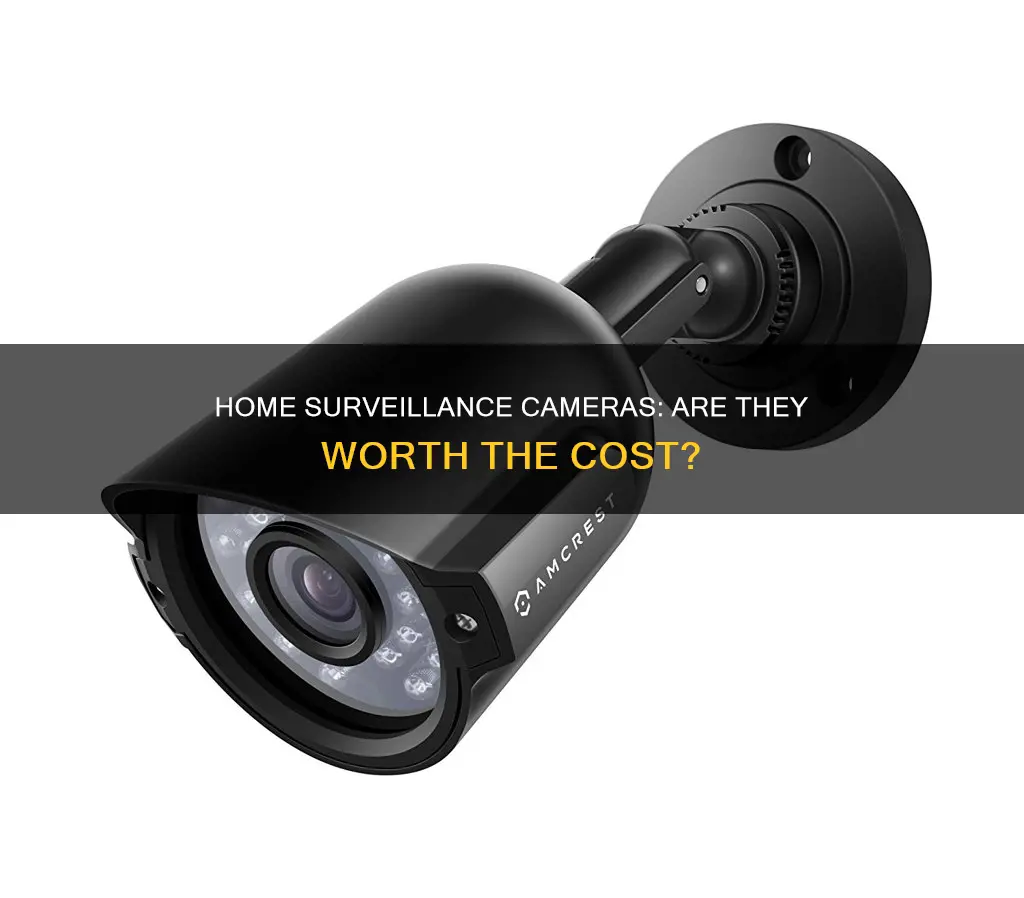
Exterior home surveillance cameras are a great way to keep your home and family safe. They can be used to monitor your property, deter intruders, and keep an eye on your pets and children. When choosing an outdoor security camera, consider factors such as power source, video quality, night vision, storage options, and smart platform compatibility.
There are a variety of outdoor security cameras on the market, ranging from wired to wireless, battery-powered to solar-powered, and budget-friendly to high-end options. Some popular brands include Lorex, Nest, Arlo, Ring, Wyze, and Blink, each offering unique features such as motion detection, two-way audio, and floodlights.
Before purchasing an outdoor security camera, it is important to consider your specific needs and budget. Factors such as placement, durability, and compatibility with your smart home system should also be taken into account. Additionally, be prepared to factor in the cost of a monthly or yearly storage plan to make the most of your camera's features.
| Characteristics | Values |
|---|---|
| Power Source | Wired, battery, solar |
| Video Resolution | 1080p, 2K, 4K |
| Field of View | 120-180 degrees |
| Night Vision | Infrared, colour |
| Storage | Cloud, local |
| Smart Platform Integrations | Alexa, Google Assistant, Apple HomeKit, IFTTT |
| Two-Way Audio | Yes |
| Motion Detection | Yes |
| Weather-Resistant | Yes |

Wired vs wireless
Wired Security Cameras
Wired security cameras are connected to a central hub, which can be a DVR (digital video recorder) or NVR (network video recorder) system. The number of cameras in a wired system usually starts at four and can go up to 16. They are hardwired to the internet and a power source, and they record footage 24/7. The footage can be stored locally on the hub or sent outside the home to a network, allowing remote viewing.
Wired security cameras offer greater reliability than wireless cameras, as they are not susceptible to network failures or on-site tampering. They also provide a clearer and more stable video and audio quality. However, they require more setup time and effort, and professional installation is often necessary. They are also less portable and can be costly to install, with wiring having to be hidden and run to numerous locations.
Wireless Security Cameras
Wireless security cameras connect to the internet via Wi-Fi and can be powered by AC power or batteries. They are easy to install, with minimal setup required, and they are flexible in terms of placement. They are also scalable, and renters will find them convenient as they can be uninstalled and moved to a new location.
Wireless cameras are prone to digital snooping and hacking, and their video quality may be affected by the strength of the Wi-Fi connection and the number of devices using the network. They may also require a monthly fee for cloud storage. Additionally, wire-free cameras need their batteries to be changed regularly, and their placement may be limited by the need for a power source.
Both wired and wireless security cameras have their advantages and disadvantages, and the decision depends on your specific needs and expectations. Wired cameras are more reliable and offer better video and audio quality, but they are more costly and time-consuming to install and are less portable. On the other hand, wireless cameras are flexible, scalable, and easy to install, making them a convenient and affordable option. However, they may have a less stable connection and are more susceptible to hacking.
The Evolution of Camera Technology: First 1080p Camera
You may want to see also

Video quality
Night vision is another vital aspect, ensuring clear footage even in low-light conditions. Some cameras offer infrared night vision, while others provide colour night vision for more vivid and detailed images. It is also important to consider the range of the night vision, with some cameras offering a longer range of up to 30 feet or more.
Additionally, advanced features such as digital pan, zoom, and subject tracking can further enhance the video quality of outdoor security cameras. These features allow for a closer and more focused view of the subject, making it easier to identify people or objects in the footage.
When choosing an outdoor security camera, it is essential to consider the lighting conditions, the desired level of detail, and the specific area you wish to monitor. By selecting a camera with the right resolution, field of view, and night vision capabilities, you can ensure that you capture clear and useful footage.
How Long to Charge Mobius Cameras Fully?
You may want to see also

Night vision
The Arlo Pro 5S 2K is a top-line DIY model with a solid set of features. The 2K video resolution yields extra detail, a 160-degree field of view is great on a cam this size, and colour night vision works very well to enhance images in dark conditions.
The TP-Link Tapo C310 outdoor camera features 2K resolution, night vision up to 98 feet away, Alexa and Google Assistant compatibility, and local storage via a microSD card slot.
The Ring Stick Up Cam Plug-In comes with a weather-resistant cord or add-on battery and can distinguish between people and other moving objects. It delivers crisp, 1080p video with an expansive 130-degree view and clear two-way audio.
The Blink Outdoor 4 offers a 1080p resolution, infrared night vision, two-way audio and dual-zone motion detection.
The Google Nest Cam (Outdoor or Indoor, Battery) packs a useful selection of smart features to help you keep tabs on your home. It offers sharp 1080p HDR video, face recognition, dual-band Wi-Fi, and intelligent alerts that know the difference between people, animals, and vehicles.
The Lorex Fusion 2K IP Cam is a powerful 2K outdoor camera that can handle the most demanding security and surveillance, making it ideal for homeowners who want to keep the best eye possible on their property. It has far-reaching night vision.
The Eufy SoloCam S230 with an integrated solar panel offers colour night vision and motion detection with person recognition.
The Lorex 2K Wi-Fi Floodlight Camera is a floodlight camera that uses large lights to illuminate a broad space, like an entire driveway or a dark backyard. It has impressive night vision.
Focusing Your Huawei P10 Camera: Tips and Tricks
You may want to see also

Storage
When it comes to storing the footage from your exterior home surveillance cameras, there are two primary options: local storage and cloud storage.
Local Storage
Local storage involves saving your video recordings to a physical device, such as a microSD card, a USB drive, a hard drive, or a DVR/NVR. This option offers more privacy and can be useful if you don't want your footage to be accessible online. However, local storage can be more difficult to manage, especially when the storage starts to fill up. It is also important to note that local storage may not be as secure as cloud storage, as someone could potentially steal the physical device containing your footage.
Cloud Storage
Cloud storage, on the other hand, involves saving your video recordings to a remote server operated by the camera manufacturer. This option is typically easier to set up and manage, and you don't have to worry about running out of storage space. However, cloud storage usually requires a subscription fee, and there may be privacy concerns since your footage is stored on a third-party server. It is worth mentioning that some companies offer free cloud storage for a limited time before the footage is overwritten or deleted.
When choosing between local and cloud storage, consider factors such as privacy, convenience, cost, and the amount of storage space needed. Additionally, check the camera's compatibility with different storage options, as not all cameras support both local and cloud storage.
Troubleshooting SpyPoint Camera Battery Drain
You may want to see also

Smart platform integration
Google Assistant and Amazon Alexa are the most widely supported smart platforms across exterior home surveillance cameras. This allows for easy voice control and the ability to view camera footage on smart displays and through voice commands. Apple HomeKit support is less common but still offered by some brands, such as Arlo, Eufy, and Logitech. Samsung SmartThings integration is also available on select cameras, such as those from Arlo and TP-Link, allowing for automated routines and smart alerts.
When choosing an exterior home surveillance camera, it is important to consider the smart platform integration options. By opting for a camera that integrates with your existing smart home ecosystem, you can enhance your home security setup and make it more convenient to monitor and control your devices. This allows for a more seamless smart home experience and can provide added benefits, such as automated routines, smart alerts, and voice control.
In addition to smart platform integration, there are several other factors to consider when choosing an exterior home surveillance camera. These include power options (battery or wired), video storage (local or cloud), field of view, and weather resistance. It is also important to research the brand's track record for privacy and security, as well as the camera's ability to withstand extreme temperatures.
By considering your smart platform integration needs and other key factors, you can choose an exterior home surveillance camera that best suits your specific requirements and enhances your smart home experience.
History of Brownie Hawkeye Camera: When Was It Made?
You may want to see also
Frequently asked questions
The best exterior home surveillance cameras include the Arlo Pro 5S 2K, the TP-Link Tapo C310, the Ring Spotlight Cam Plus, the Blink Outdoor 4, the Google Nest Indoor/Outdoor Cam, and the Lorex Fusion 2K IP Cam.
Exterior home surveillance cameras can help ensure the security of your family and property by providing reliable surveillance and keeping intruders at bay. They can also be used to monitor specific zones, such as a driveway, and keep tabs on what's happening around your property.
Yes, there are laws and regulations regarding the placement of exterior home surveillance cameras. In the US, there are no restrictions on the use of security cameras on private property. However, federal wiretapping laws come into play when audio recording is involved, and consent from all parties is required for audio recording in many states. It is also important to respect the privacy of others and only capture footage of areas that you own or control.


